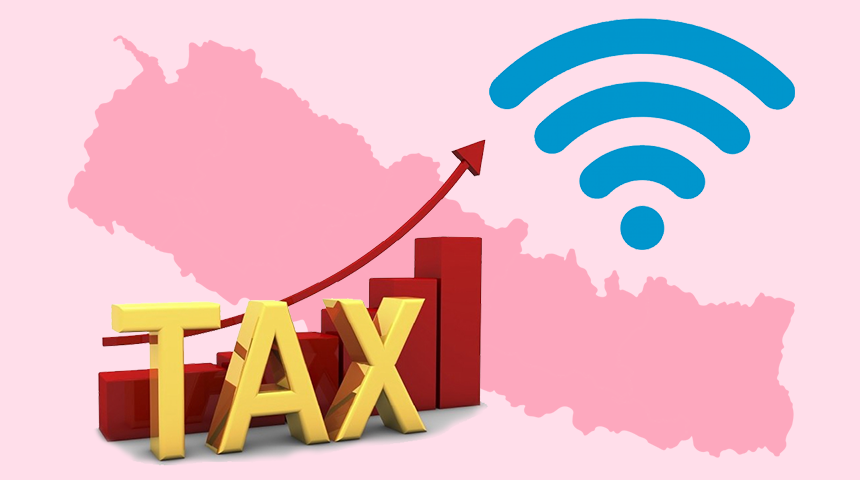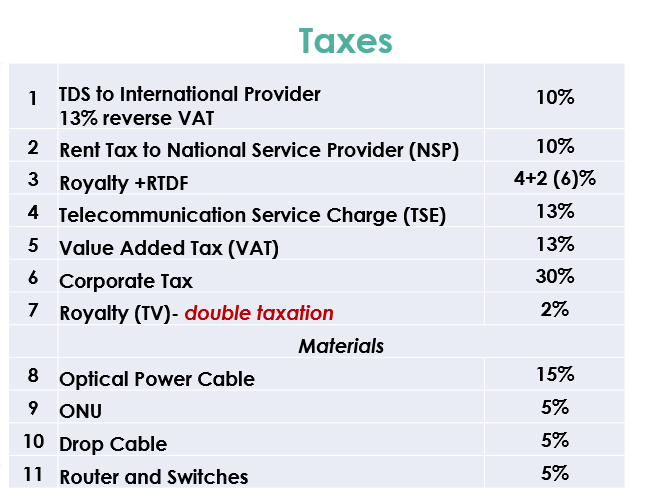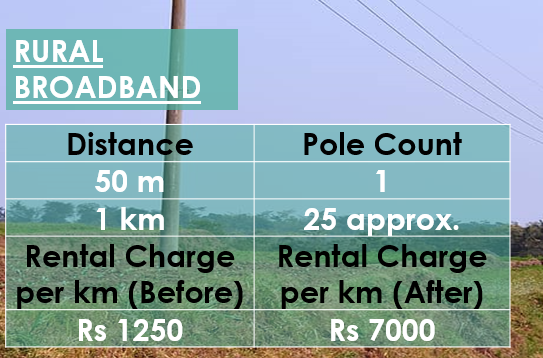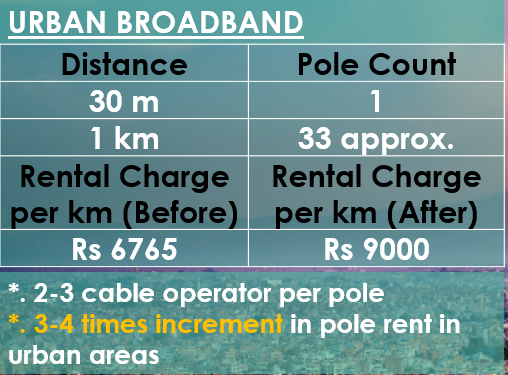Connecting remotely to the outside world had never been as easy as now. And Covid-19 has made us realize that the internet is no more a luxury, but a basic need.

Ironically, while the rest of the world is busy in digital space, almost half of the world has no access to the internet.
According to an article published in November 2020 at Accessnow.org, an organization that works on defending and extending the digital rights of users all around the world, only 54 percent of the population uses the internet; that is only 4.1 billion people have access to the internet.
The article titled “More than 3.5 billion left in the dark: Why we’re still fighting to reach U.N. targets for internet access”, writes that this digital divide has highly affected the population in developing countries in terms of health, economic and social perspective by keeping them disconnected.
A report by International Telecommunication Union (ITU) shows that only 19 percent of people in developing countries were using the internet in 2019.
Internet access in Nepal
Technology has always been a crucial need for infrastructure development. While landline and dial-up internet ruled in the late nineties, now mobile data and broadband internet have been keeping us connected.
According to the “Price of fixed-line broadband – 2020 report’ published by Cable.co.uk, the price of broadband internet in Nepal is lesser compared to other countries including India, Bangladesh, Afghanistan, and Pakistan. The average price of the internet is 13.15$ per month.
According to the report ‘Internet Delivery in Nepal: Issues and Challenges’ by the Internet Service Providers Association of Nepal (ISPAN), average people in Nepal have to spend 5 percent of their income on broadband internet connection. The report says that only 35 percent of the people in Nepal have a broadband internet connection.
On the other hand, mobile data price is quite expensive in Nepal. According to a report titled ‘Worldwide mobile data pricing 2020’, published by the Cable UK, Nepalis have been paying an average of Rs. 104.53 for 1GB mobile data use.
Reason for high price internet
Though Covid-19 triggered an unprecedented demand for robust digital infrastructure in every part of the country, it was difficult for many people to get easy access to the digital connections. Expensive internet has been a major concern.
As the internet cost has been going down in most parts of the world, ISPs in Nepal need to come up with more competitive prices.
But the ISP entrepreneurs share that several factors including huge investment in infrastructure from the beginning to the end phase of supplying internet to end-users, exorbitant taxation, and increasing the rent of the poles have been adding burden to the ISPs. And the result of the price hike always affects the end-users.
Here are a few reasons which are responsible for the high price of the internet in Nepal.
High Taxes
Though the government has identified the internet as an essential service, it has imposed heavy charges on the ISPs. ISPs have been burdened with taxes in 10 different headings.
According to the ISPs, they have to pay 30 percent corporate tax. The ISPs have shown their concern that this tax is equal to the tax levied on cigarettes, tobacco, and drinks. While the tax in other sectors is 25 percent, the government has imposed a higher tax for the internet, say the ISP entrepreneurs.
The government levies 10 percent TDS while entering international bandwidth in Nepal.
The ISPs have to pay 4 percent of their annual income in royalties and 2 percent for rural telecommunications development funds (RTDF).
In addition to this, the ISPs are required to pay a 13 percent telecommunication service fee (TSC).
Apart from that, the government has imposed 15 percent customs duty on optical fiber cable, 5 percent customs duty on drop cable, percent custom duty for routers and other switches, and 5 percent on Optical Network Unit (ONU).

Increased rent on pole
NEA issued new rental charges for their poles in January 2021. The charge of pole rent per kilometer has been increased to Rs 7,000 per year in the rural areas and Rs 9,000 in the urban areas.
Usually, in rural areas, the poles are placed at a distance of every 50 meters. There are around 20-25 poles in one kilometer. The rental charge has been increased recently by Rs 5,750. Earlier the charges were Rs 1,250 per kilometer.

The ISP entrepreneurs say that as the household density is very less in rural areas, it costs very high to take the cable to each house, which is very scattered and at distance.
Similarly, in the urban areas, the poles are placed at a distance of 30 meters, which totals 33 poles per kilometer. Earlier the rental charge was Rs 6,765 per kilometer, and now it has been increased by Rs 2,235.

According to Binay Bohra, former president and senior advisor of ISPAN and Managing Director of Vianet Communication, it is good to charge rent per pole rather than charging per kilometer.
“The household in the village area is scattered and the density of households is quite less. So, we face loss when we have to pay rent per kilometer,” says Bohra.
The ISP entrepreneurs say that the government must decrease the revised rent and charge them per pole.
“According to NEA, in a formal program ‘Internet Delivery in Nepal, Issues and Challenges’ they stated that they have been collecting the rent for maintenance costs of the poles, and not as an income stream. So, they must charge us a minimum rate,” says Suvash Khadka, CEO of ISPAN.
OPGW fiber cable
Nepal Electricity Authority (NEA) has increased the rent of OPGW fiber cable by double which requires ISPs to pay Rs 32,000 per kilometer annually (excluding tax).
“This charge is almost double than the earlier rate,” says Khadka.
High infrastructure cost
It has been more than two decades since the first internet service was introduced in Nepal through email service in 1994. Mercantile was one of the first companies to introduce the internet in Nepal. And in 1995, the first ISP of Nepal was introduced.
From then to now, the scenario has completely transformed.
“Earlier, devices that could handle 2-4 gigabits per second (GBPS) traffic were more than enough. However, now, the domestic traffic of Nepal has reached 1 terabit per second (TBPS),” says Indiver Badal, former CEO and board member of Internet Exchange Nepal.
The ISPs have already invested 100 times than the initial investment to build the network and handle the traffic, he shares.
Nepal’s internet infrastructure depends on an international gateway and local networks. The internet mostly comes through Bhairawa, Dhalkebar, Biratnagar, Birgunj, and Tanakpur borders with India. Another gateway is Rasuwagadhi, through which we get internet from China.
Despite the agreement with China Telecom Global which happened in 2018, Nepal’s dependency on India for cyber connectivity has not decreased.
“The internet which comes from China is slower than the one which comes from India. The route is long and due to this the latency is high because of the difficult terrain,” shares Bikram Shrestha, chairperson of Nepal Internet Foundation.
Latency is measured in milliseconds and it is the time taken by the data to be transferred from its source and its destination. High latency can make even fast internet seem slow. “Also, according to a survey, the price of the internet from China is slightly higher than the price of internet through India,” he shares.
On the other hand, Nepal imports major of its internet bandwidth through Indian companies Tata and Airtel. “As we have only two choices, there is enough space for monopoly from these companies, which compels us to import the essentials at a higher price as well,” he says.
Lack of Infrastructure Company
ISPs have been urging the government to frame a policy for Infrastructure Company.
ISPs require various infrastructure and physical equipment to provide services to their end-users. To name a few, fiber optics, land, buildings, BTS pole, earthing are some infrastructure.
The companies need to set up these infrastructure and maintain these solely to ensure smooth service availability for their customers. The number of ISPs has increased compared to before but every company has to purchase and manage the infrastructure individually.
“We have to import almost all the equipment. This makes our cost high. So, instead of individual purchase, if an infrastructure company buys all the materials in bulk and arranges other essential infrastructure, the cost will come down,” says Khadka.
According to the entrepreneurs, the lack of an infrastructure sharing model has also burdened them with holistic responsibilities adding cost to their operation.
The ISPs are compelled to expand their infrastructure with individual investment.
According to the report by ISPAN, the ISPs have to re-invest in the wires in case of fire or any accident.
Though the government is preparing to form an infrastructure company under the leadership of Nepal Telecom for telecommunication infrastructure sharing, ISPs urge on the need of two infrastructure companies.
“A single player in the market will cause monopoly and affect on price and quality of materials. We need to have one more infrastructure company from the private sector for healthy competition in the market,” says Khadka.
Why internet cost has to be reduced?
The pandemic led students to move online, it pushed the offices to do video conferencing instead of office meetings and all the essential works got results through digital communication.
However, not everyone could fit into the trend in Nepal. This shows that the Nepal government still needs to act critically when making decisions for the internet sector.
Productivity in itself is crucial for the economic development of the whole nation. And internet promotes efficiency, inclusion, and productivity. In fact, robust internet infrastructure is an essential part of economic prosperity. But Nepal government seems indifferent to it.
Concerned stakeholders worry that the ISP companies may have to face serious financial challenges if the government doesn’t work on framing friendly policies for the price reduction.
“The ISPs have already invested immensely in infrastructure and on top of that, they have to pay a heavy tax. If the policies don’t come in favor of the industry, many ISPs will be closed in the next 2-3 years,” says Badal.
Bikram Shrestha supports Khadka’s view and says “Internet is a productive sector. The government must focus on collecting tax from luxury and unproductive sectors. The Internet has to be affordable for everyone.”
The Digital Nepal Framework 2019 writes that Nepal is expected to lead internet penetration by 2025 in comparison to major economies such as China and India because of its growth trend over the next few years. Industry experts doubt this statement.
“If the government doesn’t decrease the exorbitant taxes imposed on this sector, this is just going to be a day-dream. The leaders deliver unrealistic speeches about the digital Nepal framework and its vision, but their actions are completely destructive for their goal,” says ICT and information economy expert Manohar Bhattarai.
Similarly, the government has also set a target that the cost of broadband service will be brought down to five percent of Gross National Income per capita in the Broadband policy 2071, entry-level broadband prices will be brought to 3.5 percent or less of GNI per capita by 2018. But, every step of the Nepal government is contrary to its policy targets.
Looking at a bigger picture
The significance of the internet in economic development is getting larger.
Subash Khadka says that 10 percent internet penetration is equal to a 1.3 percent contribution in GDP.
“So, the price has to be decreased to make the internet accessible, so that everyone can do their part in economic development,” he views.
Instead of looking at short-term benefits, the Nepal government must get into a bigger picture. The taxation has to be decreased, provision for Telecommunication Infrastructure companies has to be made and friendly policies for internet development.
Government to Government initiative
G2G program would be beneficial for getting the internet at an affordable price.
“One way is to arrange direct connection with submarine cable at Mumbai or Chennai landing point and other is connecting with Hongkong data center via China. Also, the government can find a way to use the network of Indian railway connectivity,” says Shrestha.
Now, we buy the same broadband from Tata and Airtel. So, if we get to buy the connection directly, the cost will be much less. “This is possible but never-ending political instability has always been a hindrance towards such productive initiation,” he says.
Working on local content creation can save cost
According to Bikram Shrestha, creating more local content can also save costs for bandwidth. “If we create more local content, the traffic will remain in Nepal. The volume of traffic traveling outside the country will be lesser, which will save the cost for bandwidth,” says Shrestha.
-
Realme C63 with 50MP Camera Now Available in NepalHIGHLIGHTS The Realme C63 price in Nepal is Rs. 15,999 (4/128GB). It is powered by…
-
Yamaha MT-15 Version 2.0 Expected to Launch Soon in Nepal: Find Out What’s NewHIGHLIGHTS Yamaha MT 15 V2 price in Nepal is expected to be around Rs. 6…
-
Yamaha Aerox Review: Fast and Fun with R15 at Heart!TechLekh Verdict Yamaha Aerox 155 is an outstanding scooter that combines power, style, and advanced…





















